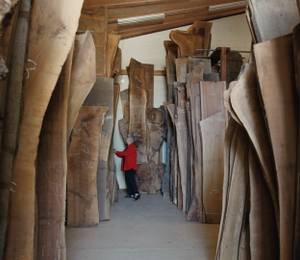Singapore – Mr Desmond Lee, Minister for National Development and Minister-in-Charge of Social Services Integration, launched the Building and Construction Authority (BCA)’s Green Mark 2021 at the opening ceremony of the International Built Environment Week (IBEW) 2021 on Tuesday, 7 September 2021. The revised Green Mark Scheme aims at raising energy efficiency requirements and environmental sustainability standards for new and existing buildings.
Under the revised scheme BCA Green Mark 2021 (GM: 2021), buildings would need to meet higher minimum Energy Efficiency levels and score sufficient points in the Sustainability Sections to be certified under the BCA GM: 2021. The key outcomes include:
- Raising energy performance;
- Designing for maintainability;
- Reducing embodied carbon across a building’s life cycle;
- Using smart technologies;
- Enhancing a building’s resilience to climate change; and
- Creating healthier environments for building users.
The certification will be applicable to buildings/developments that are (a) new, (b) existing, and (c) “In Operation”, (buildings and developments, which have been certified under BCA Green Mark in the past). For more information, visit https://go.gov.sg/gm2021
“The refreshed BCA Green Mark 2021 Scheme is an outcome of the co-creation process that has brought together many passionate stakeholders and industry experts. The scheme represents our shared vision for a green and sustainable future. We hope that it will help Singapore meet our sustainability targets in the Singapore Green Building Masterplan and create more opportunities for our green building practitioners. I am very encouraged by the passion and commitment by the green building community, having had the opportunity to participate in this collaborative effort. Let us work together for a more sustainable future for Singapore,” said Architect Tang Kok Thye, President of the Singapore Green Building Council.
Revised Green Mark scheme aligned with international benchmarks and goals
The BCA GM: 2021 is aligned to international sustainability goals and requirements such as the United Nation Sustainability Development Goals, World Green Building Council Health & Wellbeing Framework, global real estate reporting frameworks like Global Real Estate Sustainability Benchmark (GRESB) and recommendations under the Taskforce for Climate Related Financial Disclosures (TCFD)*. Developers and building owners pursuing BCA GM: 2021 certification for their developments and buildings will continue to have access to green finance. The BCA GM: 2021 focuses on environmental sustainability aspects – such as whole-of-life carbon, health and well-being, climate resilience, design for maintainability and adoption of integrated digital solutions – which promote outcomes that are aligned with the United Nations Sustainable Development Goals.
* The TCFD recommendations provide a framework for companies to disclose climate-related risks and opportunities relating to their ESG performance. BCA GM: 2021 promotes the use of TCFD recommendations in the evaluation of project-specific climate-related risks and opportunities.
New BCA Green Mark Super Low Energy (Residential Buildings) standard
As part of the BCA GM: 2021 certification scheme and to push for more Super Low Energy (SLE) developments in Singapore, BCA and the industry created a new standard for super low energy residential buildings.
The BCA GMSLE:RB standard emphasises passive design* for the residential units and common areas, active designs* through high performance, energy-efficient systems, smart energy management using sensors to control the use of services such as lighting, fans, air-conditioning and escalator operations, and the use of renewable energy such as solar power for common facilities such as swimming pools, gymnasiums and function rooms.
* Good design strategies (e.g., active and passive designs) can be cost-effective as they reduce the energy consumption of a building’s cooling systems and lighting. Some good design strategies include optimising north-south orientation, window-to-wall ratio, shading at balconies, maximising natural / cross ventilation in the design of bedrooms and living rooms, and types of glass used.












